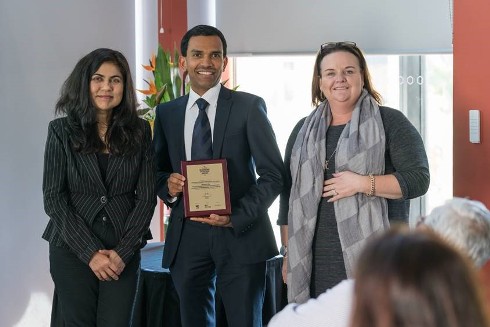Digging deep for sustainable mining that mitigates climate change
During his 14 years at Monash, Professor Ranjith Pathegama Gamage has won a swag of innovation awards for his influential research into environmentally sustainable methods for extracting deep-earth resources like oil and gas that use carbon sequestration to combat climate change. His latest honour is a new Scopus Researcher Award from Elsevier for Excellence in Sustainability Research, which brings him a step closer to the ambitious goal that drives him. “My professional and personal goal is to contribute to our understanding of the world as responsible stewards of the planet,” Professor Ranjith says.
Professor Ranjith and his team pioneer creative, technically effective mining methods that often create useful by-products like fertiliser and green cement from waste. Their affordable, reliable method for extracting enhanced coal seam gas from otherwise un-mineable deep seams uses little water and releases methane for use while trapping carbon. This in turn has reduced carbon in the atmosphere, mitigating climate change, while transforming Australia’s abundant gas reserves into safe, sustainable energy.
“We know that over 80% of energy still comes from fossil fuel, and that fossil fuel will be the dominant energy supplier for at least few more decades,” Professor Ranjith says. “So we’re developing new technologies for unconventional gas like shale gas, tight gas and coal seam gas, which are very deep and difficult to extract, so they can be extracted economically and in an environmental friendly way.”
“Burying CO2 in deep underground is considered by many scientists and US engineering academics as the answer to large-scale reduction of CO2 levels in the atmosphere. It is one of the 21st century’s greatest engineering challenges”. Conventional mining is very energy intensive (over 10% of energy produced in the world is used for rock crushing and grinding) and therefore an alternate technology is required. In-situ leaching is a promising mining technology that can be enhanced by combination with suitably advanced rock-fracturing technology. We are now developing a disruptive technology-3G-DTM (3rd generation disruptive technology for mining-patent under pending) and the “results in the laboratory environment are very promising,” Professor Ranjith says. “I am confident that this technology will revolutionise mining in the future”. This 3G-DTM technology can be used in many other fields including renewable energy such as deep geothermal energy and unconventional oil and gas.

